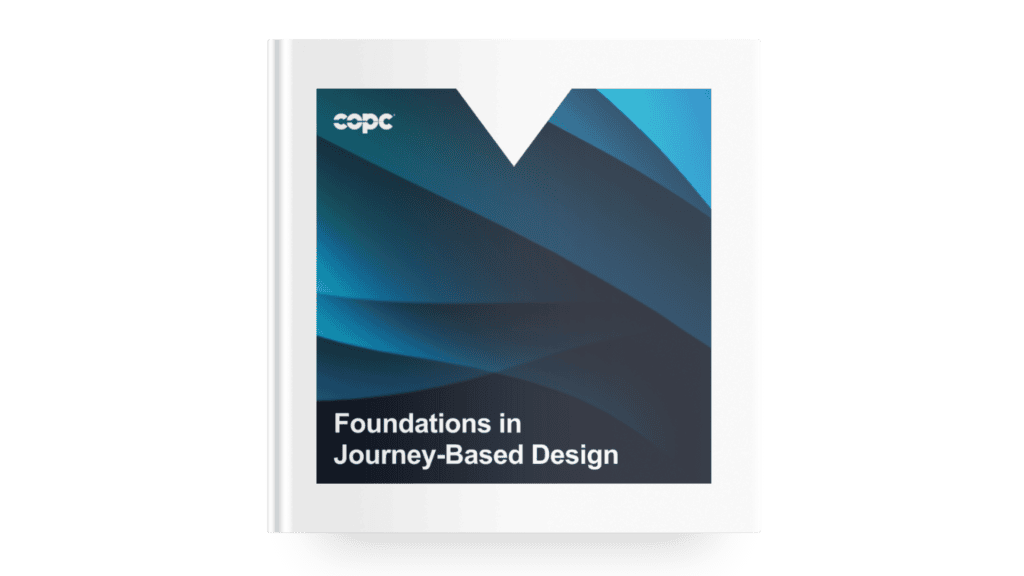
October 8, 2024
As information floods the business world, leaders strive to gain a competitive edge, seeking ways to make smarter choices, manage risk, and drive sustainable growth. But here’s the reality: none of that happens without reliable AI data governance. This task is far more than a back-office function. Proper oversight turns raw resources into a powerful asset, fueling innovation and success.
With increasing complexity, AI adds value to your data strategy by automating processes and improving accuracy. With AI, there’s no need to choose between compliance and growth, you get both. However, the surge in AI adoption means governance frameworks must adapt to keep pace.
In 2024 alone, 11x more AI models were put into production than last year, showing a clear shift from experimentation to real-world application. This rapid growth demands a greater focus on data integrity, security and ethical standards (Databricks). Data governance is necessary to maintain the reliability of these models and meet internal and regulatory guidelines.
As companies become 3x more efficient at deploying AI models, the need for comprehensive governance intensifies, preventing the loss of oversight while accelerating operations (Databricks).
When executed well, governance builds trust, optimizes decision-making, and opens new opportunities. By establishing precise collection, access, and usage protocols, organizations can align their practices with broader objectives, converting data into a tool for growth.
What is AI Data Governance?
AI data governance is the structured oversight of data quality, compliance, and security to ensure AI models deliver accurate, ethical, and reliable outcomes. It defines how information is collected, classified, accessed, and audited, turning data into a strategic advantage rather than a liability.
Balancing Static and Active Data in AI Governance
In the race to keep up, it’s easy to overlook the importance of managing static and active information. However, success strikes a balance between the two.
Static data, such as customer profiles, reports, and policies, may not change often, but it forms the core of an organization’s knowledge base. If neglected, these assets can lead to lapses in compliance and reporting, disrupting decision-making.
Meanwhile, active data enables agility. Real-time insights from sources like sales metrics, customer interactions, and digital analytics help businesses to stay competitive by identifying trends early and seizing opportunities.
With 70% of companies using Generative AI (GenAI) tools and vector databases, governance plays a key role in responsibly handling and applying real-time insights (Databricks). For example, vector databases process unstructured data to refine models, but the risk of mismanaging confidential information grows without proper oversight.
A robust management framework harmonizes these elements. Businesses create a holistic view by setting protocols for both, depicting whether operations are stable or in flux. Together, they shape the environment, promoting better decisions and long-term success.
5 Essentials to Maximize AI ROI with Data Governance
AI’s performance ties directly to the quality of its inputs. A solid foundation must be in place to capitalize on AI’s potential. These five pillars will help you maximize your return on investment (ROI):
Quality Standards
Set high benchmarks for accuracy and consistency. Even the most advanced algorithms will falter if fed flawed inputs, leading to poor outcomes. Quality standards become even more critical as 76% of companies using large language models (LLMs) choose open-source versions, which can vary in reliability (Databricks). Ensuring data integrity dramatically reduces the likelihood of errors.
Governance Policies
Decide how data is collected, stored, and used. Definitive guidelines allow AI to operate within ethical and legal boundaries while reaching its full potential. In industries like financial services, where GPU usage for AI model training has surged by 88%, governance helps businesses navigate complex policies (Databricks).
Integration
Consolidating various sources into a cohesive system allows AI to generate more precise predictions by analyzing interconnected datasets. The increased efficiency in AI deployment directly relates to the management quality, supporting consistent data flows.
Cleansing Procedures
Automating routine cleanup with AI effectively removes errors, duplicates, and irrelevant details so that only the most credible content feeds into your models. As companies become 3x more efficient at model deployment, proper data cleansing keeps quality standards high while speeding up operations (Databricks).
Enrichment
Expand your approach by incorporating both internal and external resources. AI can process enriched material, resulting in more meaningful insights and dependable outcomes. Tools like vector databases can further enhance these efforts, but careful governance is necessary to prevent the mishandling of sensitive information.

Related
Foundations in Journey-Based Design
A guide to getting the most out of your CX technology.
Connecting to Key Elements of Data Governance
The five components outlined above are essential to AI readiness. At the same time, AI doesn’t act as an add-on; instead, it strengthens your management framework. Here’s how AI accelerates each element:
Data Cataloging
A well-organized system prevents information from being lost or overlooked. AI automates the tagging and categorization process, keeping everything accessible and current.
Data Quality
AI continuously scans for discrepancies so that data is accurate and reliable, separating meaningful analysis from costly mistakes.
Data Classification
Not all assets are equally important. AI speeds up classification by automatically ranking sensitive details based on significance, minimizing human error.
Data Security and Auditing Access
Preventing misuse is a primary benefit. AI fortifies defenses by automating controls and monitoring activity in real time, catching potential issues before they escalate.
Data Lineage
AI traces the journey of information from creation through various stages of transformation, offering transparency and easy traceability to meet legal and operational requirements.
Data Discovery and Collaboration
Even the best insights are useless if your team can’t find what they need. AI simplifies the search process by quickly surfacing relevant resources to spur innovation and decision-making. The content becomes even more valuable when shared responsibly within secure systems, internally or with third parties.
When systems lack consistency, even the most well-planned strategies can fall apart. Good policy leads to value creation at every level.
Real-World Example: Healthcare
In healthcare, 69% of AI applications use natural language processing (NLP) to analyze patient records, speed up research, and develop new treatments (Databricks). Handling this sensitive information demands strict oversight to protect patient privacy and secure the vast amount of data involved.
Consider an extensive hospital network managing patient records across multiple facilities. To maintain privacy, enable accessibility, and follow regulations, the hospital implements a thorough governance program.
Catalog: The hospital centralizes all records in a single, well-organized repository, eliminating the need for healthcare providers to sift through scattered files, allowing them to deliver better, faster care.
Quality: Accuracy is non-negotiable when lives are on the line. The hospital initiates regular audits and validations to keep records current, preventing gaps or errors.
Classification: Confidential medical information is treated differently than general health records. The hospital classifies the material and then enforces specific rules for handling each category based on sensitivity.
Access Controls: Strict access limitations allow only authorized personnel to view certain records. The hospital gives doctors complete visibility into patient history, while administrative staff have only necessary views, protecting privacy and maintaining usability.
Lineage: Every patient detail is tracked, from creation through various treatments and final storage. This visibility supports healthcare standards and provides precise traceability.
Compliance and Security: Adhering to HIPAA guidelines, the hospital consistently evaluates risks, conducts training and reinforces trust by maintaining high-quality benchmarks.
This approach protects patients, improves care delivery, meets requirements and guarantees top-tier management of critical resources..

Related
CX Technology Consulting
Fusing technology and expertise to design and deliver exceptional service journeys.
Business Benefits
Effective management converts untapped potential into the force propelling businesses forward. Here’s how it contributes to overall success:
Efficiency and Value Realization
Silos slow operations down. A unified, transparent system empowers teams to make more informed choices quickly. Collaborative sharing of insights unlocks innovation opportunities.
Maximizing AI Potential
AI is only as bright as the material it processes. By providing clean, structured inputs, AI delivers consistent results, positioning organizations to outperform their competitors.
Strengthening Security and Privacy
As data breaches become more frequent, integrity takes on even greater importance. A strong system reduces risks and builds confidence through responsible oversight.
Adherence to Regulations
Governance helps businesses follow regulations like HIPAA and GDPR, safeguarding them from legal risks and reputational damage.
Webinar
The AI Power Shift: Strategy, Data & Governance for Next Era CX
AI is reshaping CX. Discover how combining knowledge management with livepro’s AI-powered platform helps overcome implementation challenges and drive real results.

Oversight of Data Governance
Leadership, accountability, and execution transform oversight from a set of rules into a strategic advantage. The following roles are pivotal in shifting a potential liability into an asset:
Chief Data Officer (CDO): The CDO is the architect of your approach, managing everything from budgets to system reviews.
Data Owners: These professionals ensure the technical integrity of your assets, managing their flow and keeping the system secure.
Stewards: Stewards translate policies into daily operations, enforcing the rules and upholding legal standards.
Committees: These groups create policies, resolve conflicts, and hold the organization accountable; they keep the system running smoothly.
Data governance is a collective effort led by key players who turn an abstract idea into a tangible business strength.
Conclusion
Implementing AI data governance best practices is essential for transforming information into a true competitive advantage. A proactive governance system ensures that data remains accurate, secure and ready for AI models, while regular audits safeguard against bias and privacy risks.
With the right framework, organizations can fully unlock the value of their data, gaining sharper insights and long-term resilience. As technology advances, the companies that invest in data governance strategies for AI today will set the pace for innovation tomorrow. The future will belong to leaders who take control of their data and use it to shape lasting success.
Source: Databricks, State of Data + AI Report (2024).

Rick Zayas
Senior Vice President, CX Strategy, Technology, and Operations at COPC Inc.
Rick brings over 30 years of business and IT expertise, focusing on client relations, CX operations, and AI enablement. Before joining COPC, he held key leadership roles at Sitel, Blue Cross Blue Shield of North Carolina, and American Family Insurance.
Throughout his career, Rick has led transformative customer experience initiatives that have boosted customer loyalty and improved operational efficiency. He holds a BS in Operations Management from Syracuse University and is certified in ITIL V3, Lean Six Sigma, and COPC Standards.
